Samsung Offers 98” Mini-LED/QD TV at …
Samsung has also lowered the price (again) on its 8K Mini-LED/QD TV set line, with 5 of the 6 offerings now at their lowest prices since inception. The top-of-the-line 900A series are now selling for $8,500, $5,500, and $4,500 (85”, 75”, 65”) respectively, down 16.7%, 24.3%, and 20.0% from their original prices, and the 800A series 8K Mini-LED/QD TV are now selling for $5,500, $4,000, and $3,000 (85”, 75”, 65”), down 15.4%, 16.7%, and 14.3% respectively, with only the 65” 800 series set above its lowest price point.
If Samsung’s Mini-LED set pricing thus far is any indication, it would likely be worthwhile waiting a bit before purchasing the 98” model as the sets already released are down 17.9% (8K) and down 11.2% (4K) from their original prices. Logic says if you can hold out for three months, the 98” model should be selling for a mere $9,867, making it the perfect holiday gift for that someone special.
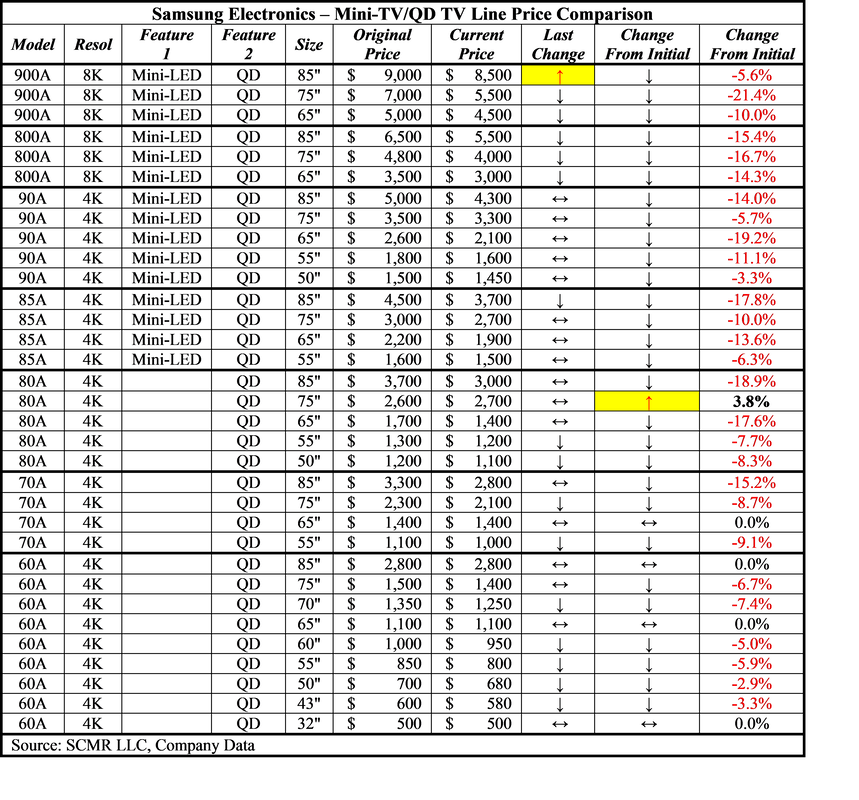
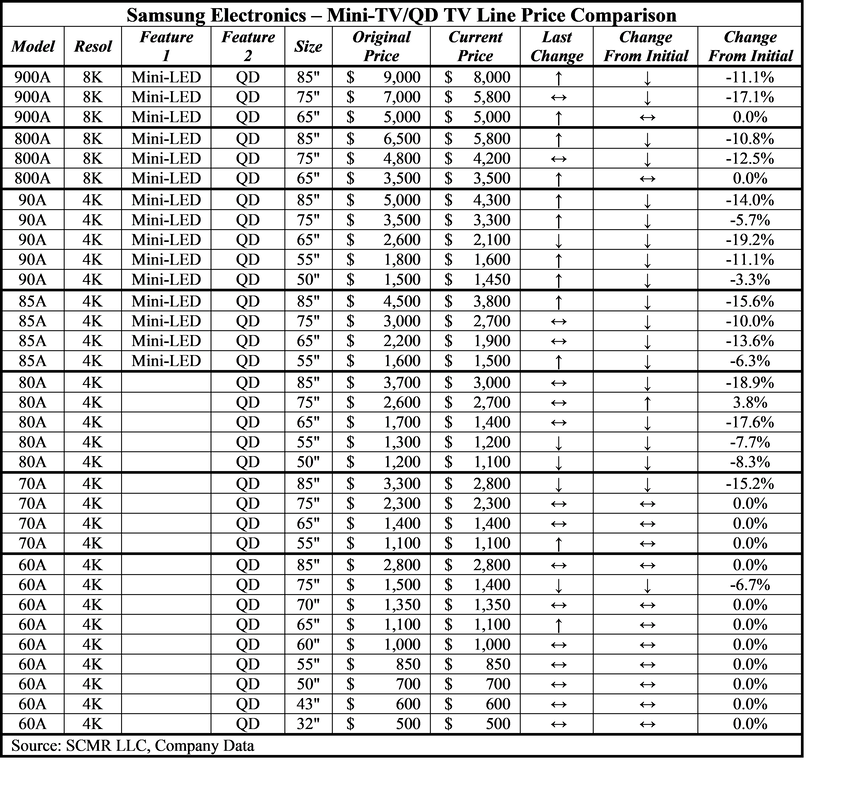
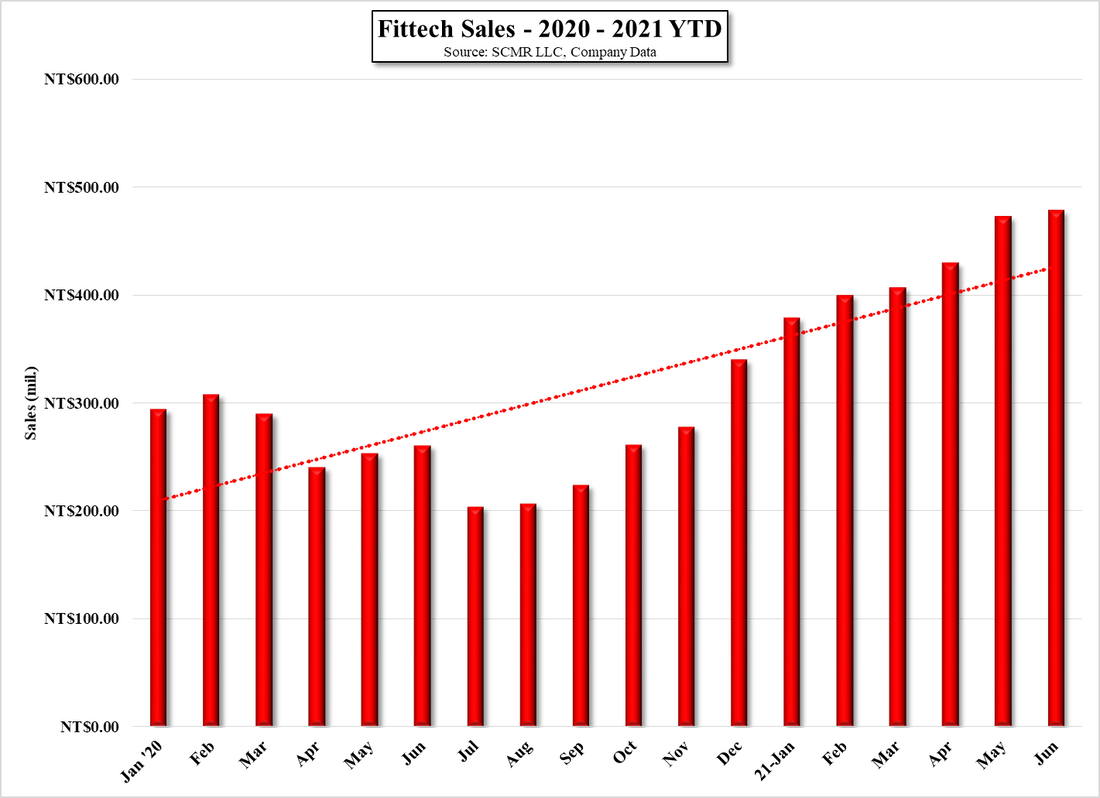

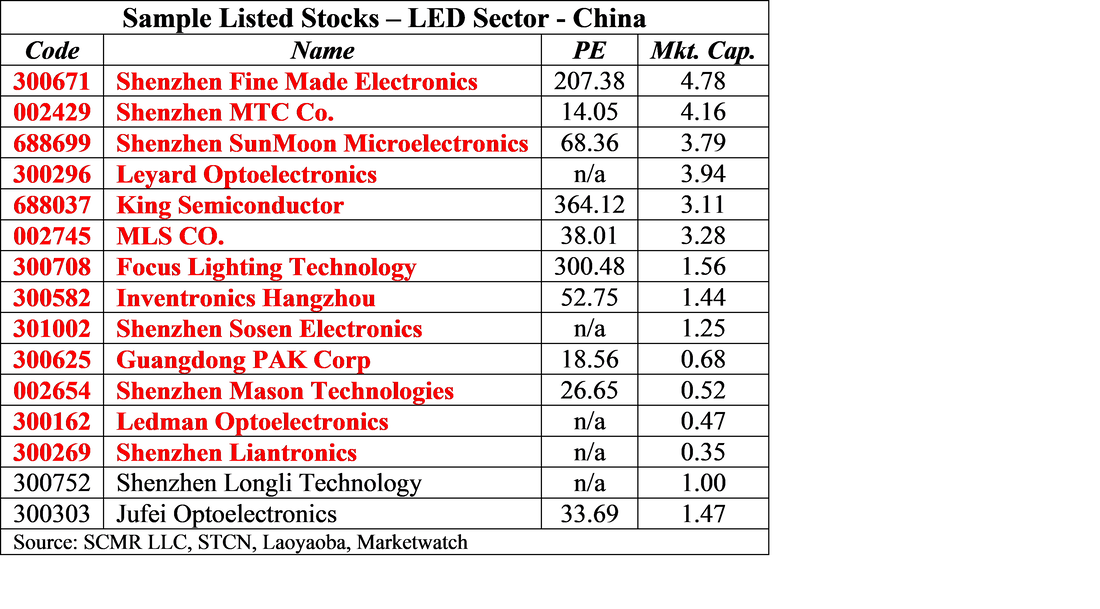
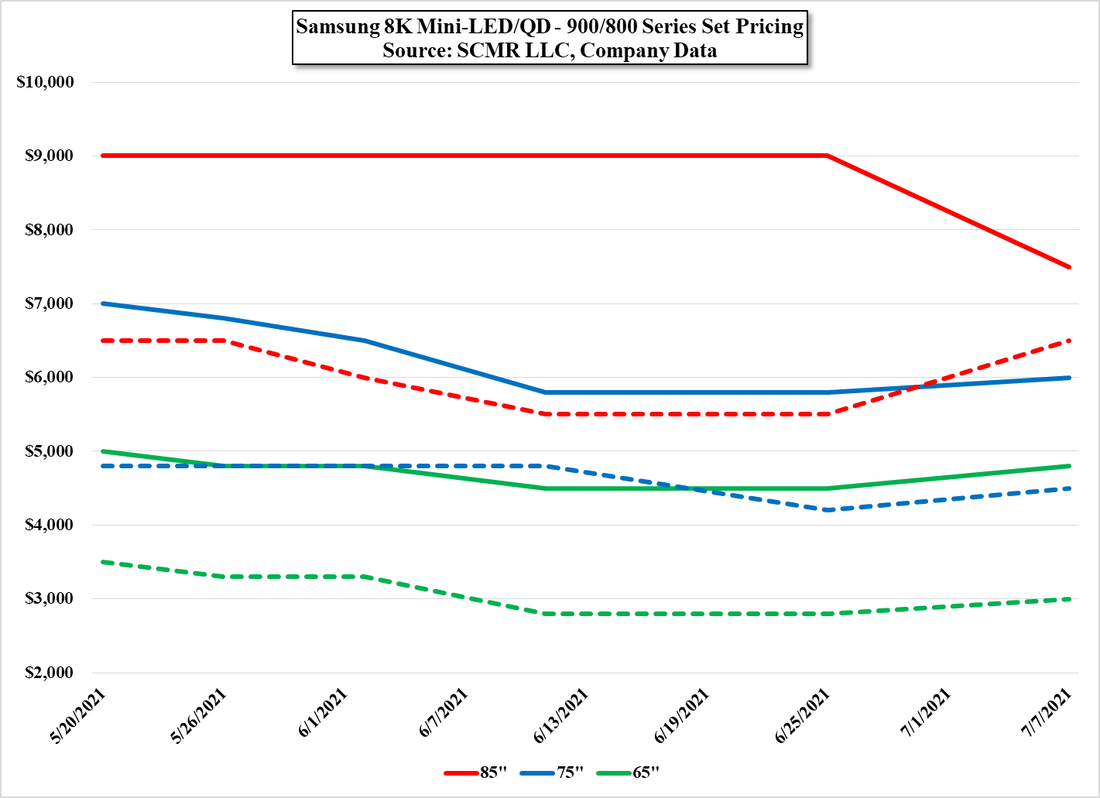
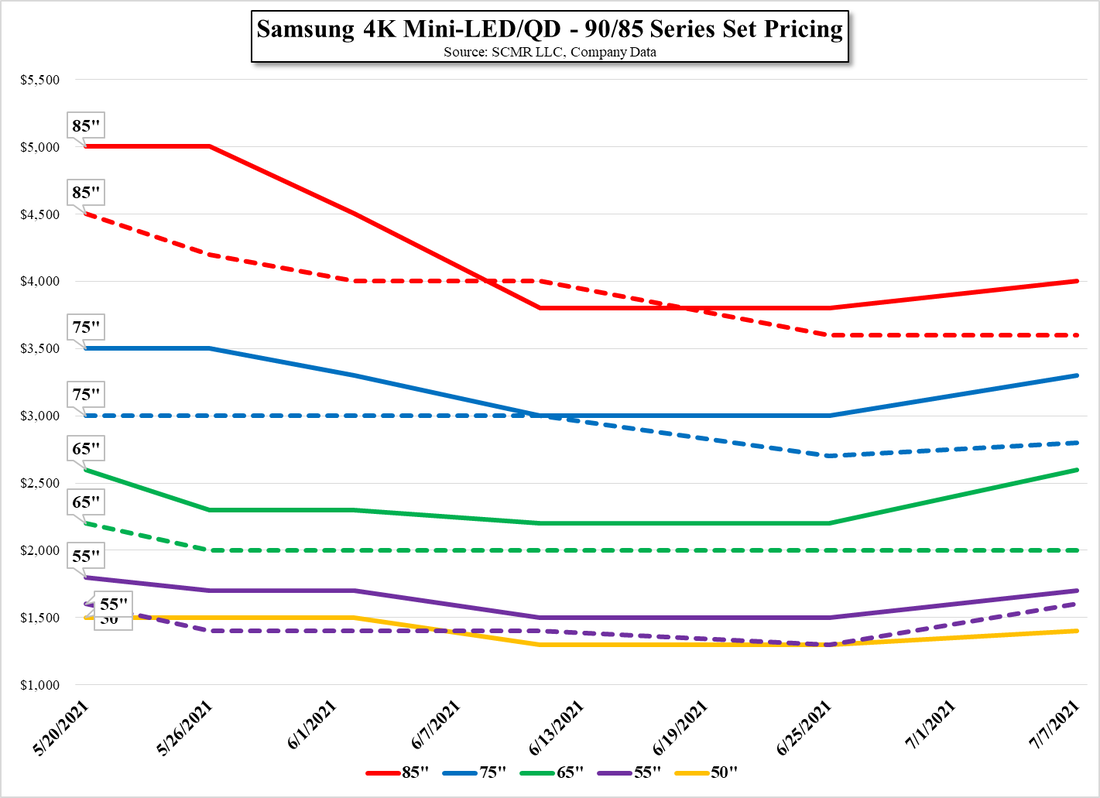

 RSS Feed
RSS Feed